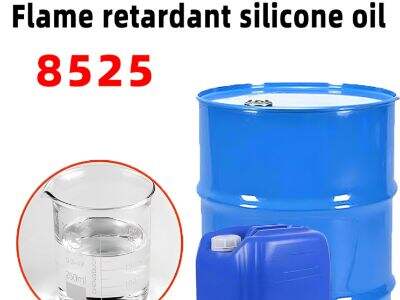Silikoneolje og silikonevæske er to liknende materialer som brukes i mange forskjellige anvendelser. De ble begge laget ved å bruke et unikt materiale kjent som silikon. Silikon er en kombinasjon av noen elementer: silisium, oksygen, karbon og hydrogen. Selv om silikoneolje og silikonevæske har noen likheter, er de også forskjellige på visse måter som gjør dem å stikke ut fra hverandre. Målet vårt med denne artikkelen er å diskutere disse forskjellene og forklare dem for å gjøre det enklere for deg å forstå.
De viktigste forskjellene
Tettheten av silikonolje og silikonvæske er en av deres mest fremtrådende forskjeller. Silikonolje er tykkere enn silikonvæske. Denne tykkheten er spesielt nyttig fordi den lar silikonolje effektivt utføre bestemte funksjoner som smøring og segling. For eksempel, hvis du prøvde å holde de bevegelige delene av en maskin på gang glatt, kan silikonolje redusere friksjon fordi den klenger godt til overflater. Silikonvæske, i motsetning, har en tyngre konsistens som lar den bevege seg mer fritt i anvendelser hvor det trenger å gjøre det. For eksempel, i kjølesystemer, hvor væsken må flyte uten blokker, er denne egenskapen veldig viktig.
Hvis de er det, er en annen avgjørende forskjell i hvordan deres molekyler er organisert. Silikonolje har et større molekyl, mens silikonvæske har et mindre molekyl. Og denne forskjellen i størrelse gjør at hver væske oppfører seg annerledes. Dette er grunnen til at silikonvæske vil evaporere lettere enn silikoneolje , da silikonvæske har mindre molekyler. Derfor er silikonvæske ofte den foretrukne valget for høytemperatursapplikasjoner, hvor fordampning kan være et problem. Hvis en væske fordampner for raskt, vil den ikke finnes når du trenger den, så du må velge den riktige.
Olje eller Væske?
Du vil høre noen snakke om "silikonolje" og "silikonvæske" som om de var byttbare, men de er faktisk ikke helt like. Silikonolje betraktes vanligvis som det tykkere sammensetningen med større molekyler, mens silikonvæske er den tynnere med mindre molekyler. Det er også verdt å merke at dette kan variere avhengig av den eksakte produktet du ser på. Silikonolje – og silikonvæske – kommer i en rekke typer tilgjengelig på markedet med ulike egenskaper og anvendelser.
Den kjemiske oppbygningen
Både silikonolje og silikonvæske består av silikon og oksygen sammen med karbon og hydrogen som tidligere nevnt. Den spesifikke sammensetningen av disse stoffene kan variere avhengig av hvem som lager dem og hva slags produkt det er. For eksempel produserer noen tilverkere silikoneolje rettet mot en veldig spesifikk anvendelse, noe som fører til ulike egenskaper enn andre silikonoljer. Som regel er silikonoljemolekyler større så de kan ikke lett fordampe og derfor er de mer varige i noen brukssituasjoner. Silikonvæsken fra SANYING har mindre molekyler og kan fordampe raskere, noe som kan være nyttig ved høy temperatur.
Fordeler og ulemper
Silikonolje og silikonvæske har begge sine fordeler og ulemper. En slik olje er silikonolje med fordeler som at den kan tåle ekstreme temperaturer og at den kan gi langvarig smøring ved høye trykk. Dette vil si at når varmen er på eller trykket er sterkt, forblir silikonoljen kompetent. Det finnes visse ulemper ved Flammehemmende silikonolje likevel. Noen tilfeller kan også oppdage at det er vanskeligere å bruke dens tykkelse og jordabsorpsjon, og det kan absorbere noen andre små partikler og kanskje ikke ønske å ha det.














































